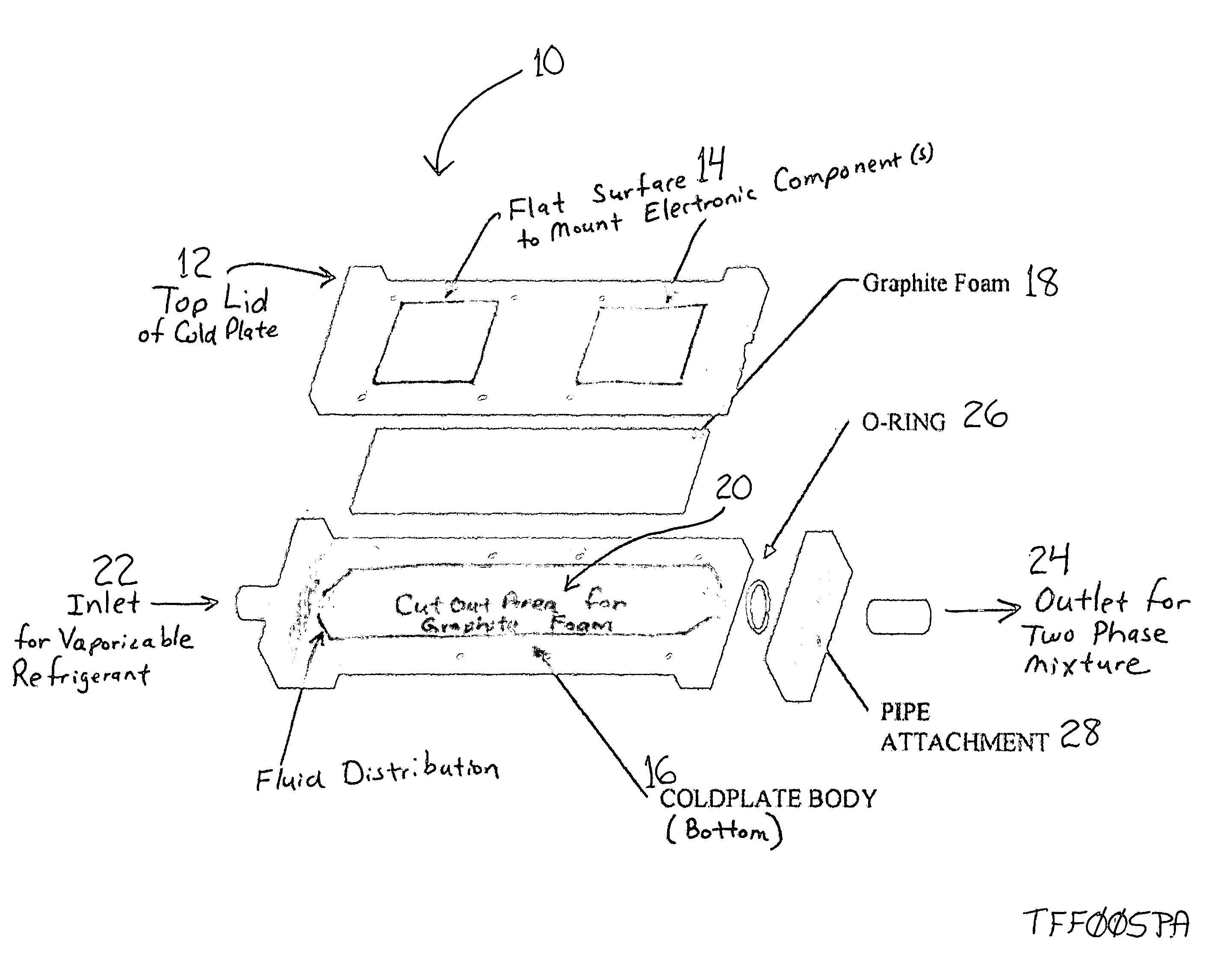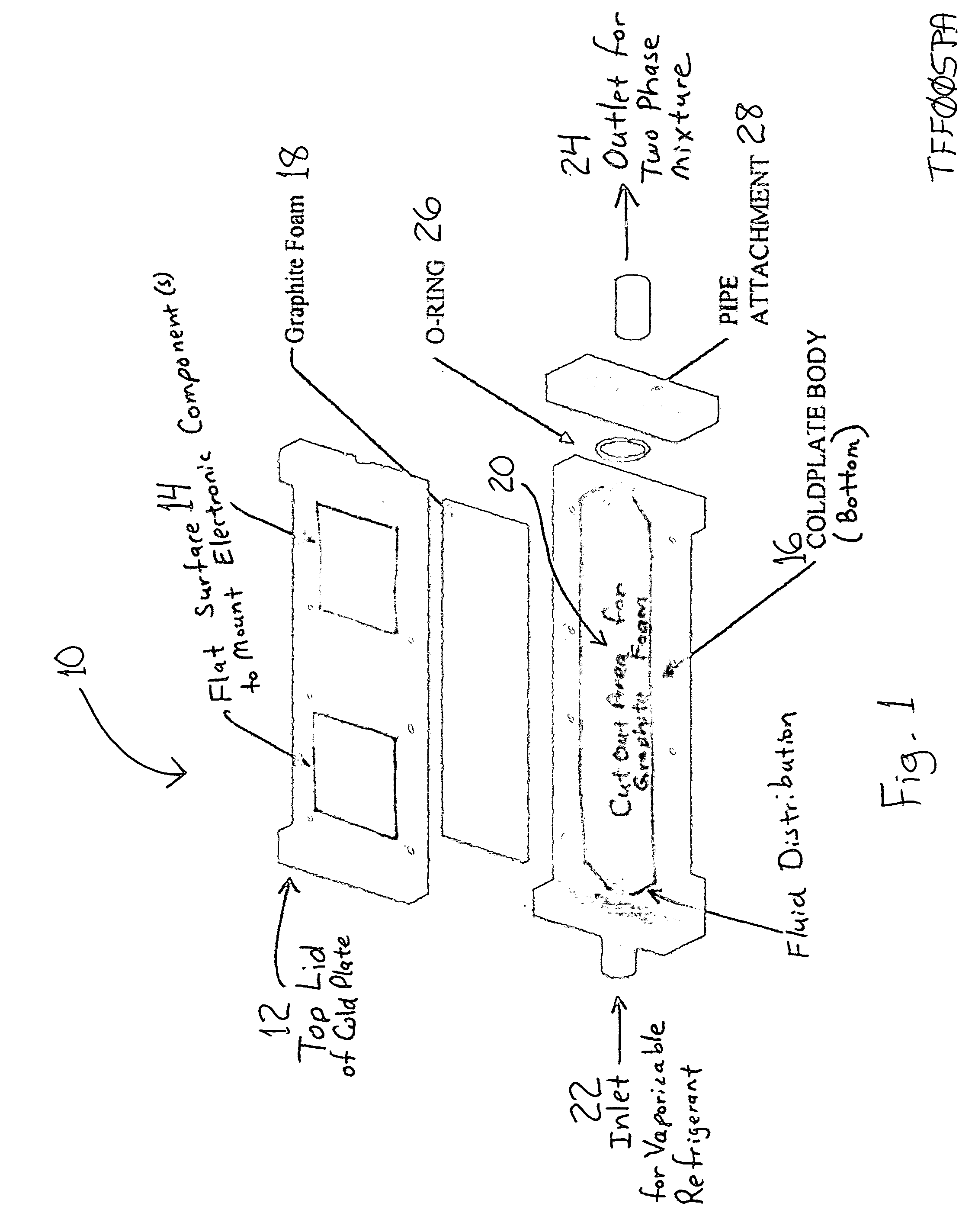Use of graphite foam materials in pumped liquid, two phase cooling, cold plates
a technology of graphite foam and pumped liquid, which is applied in the direction of regenerative heat exchangers, stationary tubular conduit assemblies, combustion processes, etc., can solve the problems of damage to electrical or electronic devices, high temperature and/or large flow rate, and the inability to use sensible heating of fluid to remove heat from electrical and electronic components, etc., to achieve high thermal conductivity of ligaments, increase available surface area, and high heat transfer surface efficiency
- Summary
- Abstract
- Description
- Claims
- Application Information
AI Technical Summary
Benefits of technology
Problems solved by technology
Method used
Image
Examples
Embodiment Construction
[0015] The present invention relates to cooling electronic components, including at least microprocessor semiconductors and power semiconductors, using a pumped liquid two phase cooling system, such as is described and claimed in U.S. Pat. No. 6,519,955, totally incorporated herein by reference. Specifically, the present invention is an improvement to the cold plate portion of the system which absorbs heat directly from the electronics to be cooled. The purpose of the present invention is to increase the surface area for heat transfer within the cold plate structure with a high thermal conductivity foamed graphite material, while still allowing for flow of both liquid and vapor through the structure to carry away the heat generated by the electronics.
[0016] Referring now to FIG. 1, there is illustrated a two phase cold plate assembly 10 such as is used in a pumped refrigerant forced convection cooling system for removing heat from electronic systems. The present invention incorpora...
PUM
| Property | Measurement | Unit |
|---|---|---|
| surface area | aaaaa | aaaaa |
| structure | aaaaa | aaaaa |
| power densities | aaaaa | aaaaa |
Abstract
Description
Claims
Application Information
 Login to View More
Login to View More - R&D
- Intellectual Property
- Life Sciences
- Materials
- Tech Scout
- Unparalleled Data Quality
- Higher Quality Content
- 60% Fewer Hallucinations
Browse by: Latest US Patents, China's latest patents, Technical Efficacy Thesaurus, Application Domain, Technology Topic, Popular Technical Reports.
© 2025 PatSnap. All rights reserved.Legal|Privacy policy|Modern Slavery Act Transparency Statement|Sitemap|About US| Contact US: help@patsnap.com


